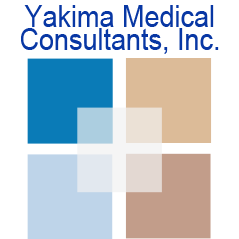When it comes to cycling, a proper bicycle–rider fit it critical. When there is an improper fit, this creates an inefficient mechanical positioning, which can compromise both performance (in terms of power output) and comfort, leading to injuries.
Did you know that exercise may be the best way to deal with an injury or ailment affecting your joints? If you’ve been experiencing intense pain when moving, it’s best to see us before you take it upon yourself to start a new exercise program.
Did you know that one website has likened an orthopedist’s operating room to a woodworking shop? This is because, like woodworkers, orthopedic surgeons use drills, screwdrivers, chisels, staples, and other mechanical tools to fix bones and help them heal properly.
Arthroscopy uses an arthroscope, which contains a tiny lens and fiber optic light that is connected to a camera and monitor. This allows the surgeon to get a clear view inside the joint and perform surgery.
Reports have shown that knee pain is the number one reason for visiting an orthopedic surgeon in the United States. In fact, in 2010, a whopping 18,623,616 patients visited orthopedic surgeons for knee complaints.
Osteoporosis is a condition involving a loss of bone mass and destruction of bone tissue. Eventually, the skeleton is weakened and more susceptible to fractures, particularly of the spine, wrist, hip, and knee.
Myth: knee replacement surgery will only make your problem worse. Fact: Ninety percent of knee replacement patients report a significant reduction in pain; 85 percent of artificial knees still function 20 years after surgery
Arthroscopic knee surgery is used to treat a torn meniscus, reconstruct the anterior cruciate ligament, and repair or remove damaged cartilage. This procedure was once used to diagnose knee injuries, but has since been replaced by magnetic resonance imaging.
Rehabilitation is an important part of orthopedic treatment. That’s why most doctors recommend it after a surgery. It involves certain rehab exercises that help the patient heal or recover quickly and get back to normal activities soon.
Never ignore a nagging injury from fear of treatment, because doing so can cause long-term injury or disability. Tendons, ligaments and muscles surrounding the injury have to work extra-hard to compensate for the injury, and that can lead to deterioration or further injury.
One type of injury that an orthopedic doctor treats is a colles’ fracture, a common injury sustained when falling out onto an outstretched hand. This injures the radius bone, one of the two bones between the elbow and wrist.
Prevent neck and back injuries by making a few simple changes to your routine. Use a backpack instead of a heavy purse or briefcase to balance your load. Sleep on your side or back, and lift objects using your legs and keeping your back straight.
For certain degenerative diseases in the musculoskeletal system, treatments can range from simple solutions like changing the diet, engaging in exercise, and taking medication to more complicated ones like undergoing hormone replacement therapy and surgery.
Developed during WWI, traction and splinting was also known as the use of intramedullary rods to treat fractures of the femur and tibia. The technology, which was pioneered by German Gerhard Küntscher, made a noticeable difference to the speed of recovery of injured German soldiers during WWII.
Do you need a pain management doctor or a sports medicine doctor? We can help you find the right doctors and care providers to treat your problem properly.
There is only one bone in the human body that is not connected to another bone and that is the hyoid. The hyoid bone is a V- or horseshoe-shaped bone that may be found at the base of the tongue in the anterior midline of the neck, between the chin and the cartilage of the thyroid.
Unlike semi-rigid functional orthotics, accomodative orthotics are soft and created with cushion and arch support in mind. Accomodative orthotics have been known to treat everything from painful calluses to diabetic ulcers!
Hippocrates was the first to try to understand and treat club feet, understanding it as a birth defect. Ancient Greeks treated clubbed feet with sturdy bandaging, a treatment maintained for a significant period of time in history.
Hip arthroscopy is a surgery in which a small cut is made around the hip and a tiny camera is used to look inside. This surgery is typically done to repair a torn labum, resolve symptoms of hip impingement syndrome, remove small pieces of loose bone or cartilage, or investigate persistent hip pain.
Orthopedic private practices make up about 75 percent of all orthopedic practices. The remaining practice types are split between the following practice settings: academic institution (8.5 %), hospital/medical center practice (6.7 %), and academic private practices of different types.
The word physiotherapy is often used interchangeably with physical therapy. To be clear: Physiotherapy (or physio) is actually the British term for physical therapy. The practitioners are referred to as both a “physiotherapist” and “physical therapist.”
Did you know that most orthopedic physicians in the US are between the ages of 40 and 60? Only 15% of all orthopedic doctors are under 40, and less than 33% are above 60.
According to a report in HealthDay News, the number of hip replacements performed in the U.S. has increased substantially; the procedure is now more common in younger people because of the growing number of cases of arthritis.
Here’s an interesting fact: The word “muscle” is from a Latin word that means mouse. To some, muscles looked like mice all curled up in a ball underneath the skin. They didn’t believe a mouse was there, just that it looked like it.


